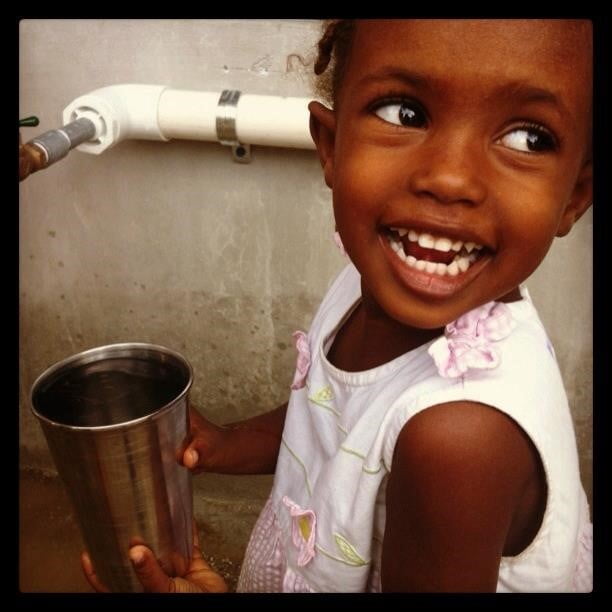When most students are on Facebook, they aren’t trying to advance awareness of post-earthquake Haiti. Fewer still are designing and coordinating a project to bring clean water to communities within the country. However, for a group of students from Embry-Riddle Aeronautical University (ERAU), that is exactly what they do.
The living conditions in Haiti are beyond compare. Three year old Tracy, pictured above, was found on the streets of Haiti suffering from malnutrition and a parasite. Dr. Marc Compere, ERAU assistant professor notes that “the harsh reality in Haiti is that living in a tent city and washing yourself in the same water used by animals is an everyday occurrence. Contaminated water creates a cycle of poverty for the Haitian people because the sick are often still in contact with the same water source that caused their sickness. They are therefore unable to get well and make a living.” Fortunately, Tracy’s life has been forever changed by the Ryan Epps Home for Children (REHC) and the students at ERAU.
One of the biggest issues with the water in Haiti is the proximity of latrines and animals to primary drinking sources. This leads to bacterial and viral contamination within the water, typically E. coli and sometimes cholera. UV filtration can deactivate all such bacteria and viruses.
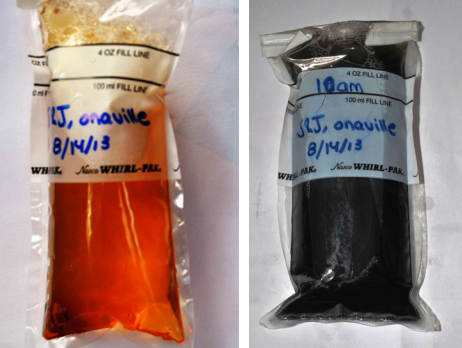 Even when water advertised as ‘purified’ is purchased from trusted storefronts, the drastic color change from chemical testing clearly shows how contaminated the water can be. Mechanical engineering graduate student, Yung Wong, states that “going to Haiti changed my life, it opened my eyes to a new culture and the desperate needs in Haiti.”
Even when water advertised as ‘purified’ is purchased from trusted storefronts, the drastic color change from chemical testing clearly shows how contaminated the water can be. Mechanical engineering graduate student, Yung Wong, states that “going to Haiti changed my life, it opened my eyes to a new culture and the desperate needs in Haiti.”
This past summer, the students worked to install the water purification system at REHC in Michaud, a suburb of Port-Au-Prince, for the 200 children and staff. This goal required pumping water from a 135 ft. deep well, purifying the water at 10 gpm using sustainable solar power. This generates a maximum of 3,600 gallons per day assuming 6 hours of good solar conditions.
The students at ERAU used CATIA V5 for all the design work on the project. The solar panel system incorporates four 285 W solar panels for the well pump, six 250W panels to power the purifier, and sixteen 250W panels for general power for other facilities at REHC. The well pump runs completely off solar power and draws well water at 14 gpm. The well water is pumped into two 1000 gallon tanks for storage.
The purifier which runs at 10 gpm (3,600 gal/day) pumps into a 1000 gallon clean water storage tank. The system includes a Helix HD Disk Filter capable of removing particles down to 50 microns, and an Ultrafiltration (UF) membrane filter capable of removing pathogens larger than 0.1 microns. This is effective against all bacteria and some viruses. The heart of the system is the UV light that delivers a dose of UV strong enough to deactivate any virus found in Haiti. The system can also run continuously for 3 days on battery if the sun doesn’t shine. If power to the bulb were to fail, it would affect the lifespan of the bulb necessitating this battery set up. Overall, the water meets clean water standards from both the EPA and NSF.
To avoid the need to replace the UF filter frequently, air and purified water is periodically sent backwards through the filter to clean it through a process called backflush. By incorporating this back flow, the service life of the filtration system is extended to 4-6 years.
However, it isn’t enough to drop a new technology in an impoverished land and expect change. The Haitians needed to be trained, educated, and empowered to the importance and usage of the technology.
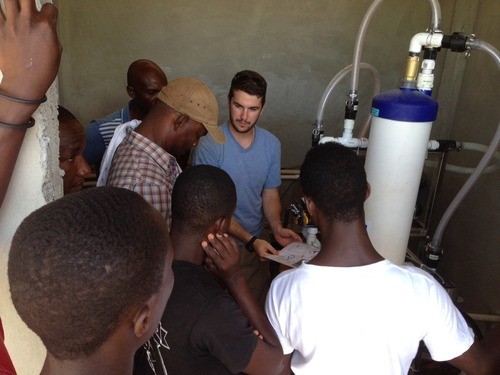 A microbusiness needed to be set up in the area to ensure that REHC would benefit financially from the new system as well as medically. Students like Kyle Fennesy needed to teach the new business owners how the system works, how to troubleshoot it, and how to clean it. Typically this training is done using pictorial diagrams as there is no guarantee that all Haitians who are using the system will speak English. “This ‘Army Jeep’ of water filtration systems makes it very obvious when a system has broken down and what you need to do to fix it. Pumping is open and clear, and the electronics are all high reliability analog devices. There is no computer to fail.” says Dr. Compere.
A microbusiness needed to be set up in the area to ensure that REHC would benefit financially from the new system as well as medically. Students like Kyle Fennesy needed to teach the new business owners how the system works, how to troubleshoot it, and how to clean it. Typically this training is done using pictorial diagrams as there is no guarantee that all Haitians who are using the system will speak English. “This ‘Army Jeep’ of water filtration systems makes it very obvious when a system has broken down and what you need to do to fix it. Pumping is open and clear, and the electronics are all high reliability analog devices. There is no computer to fail.” says Dr. Compere.
It is easier to design a system using readily accessible diesel power. However, this is an added cost to the microbusiness the students are hoping to create for the orphanage. By utilizing just solar power, the only regular cost is the yearly replacement of the $75 USD UV bulb. Solar power makes the business viable from a financial standpoint but their current challenge is making the water business culturally acceptable and ensuring the taste of the water is what the locals are used to. There is substantial competition and business growth is an ongoing effort.
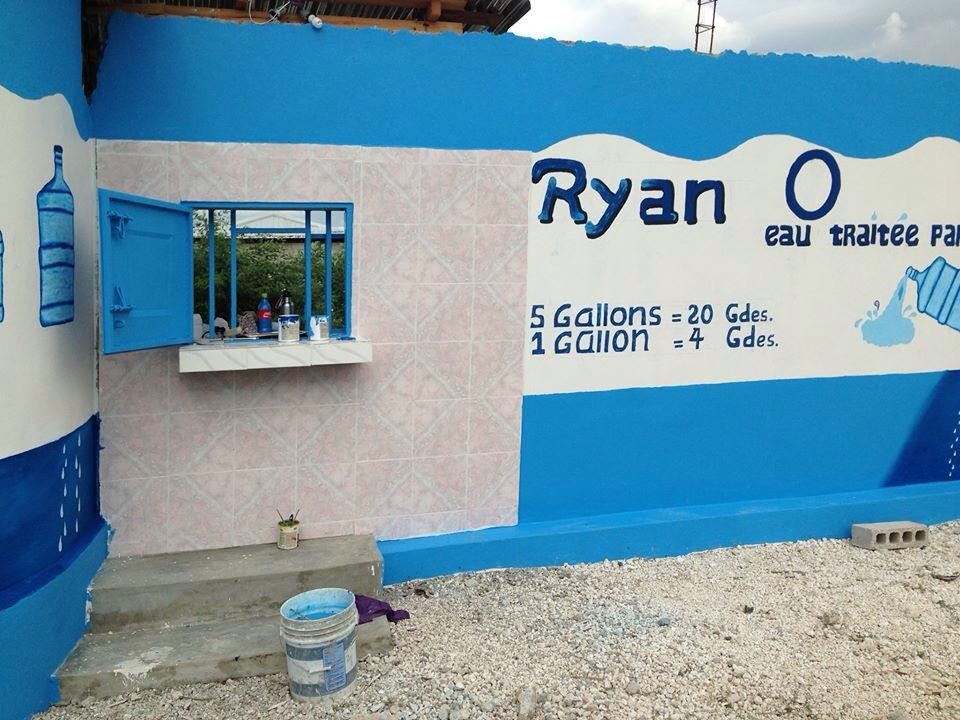 For the survival of the microbusiness, it was important that the storefront be culturally appropriate. Dr. Compere notes that “even if someone were to offer you a better cereal outside of your local grocery store at a reduced cost, you would likely walk inside and spend more money on the inferior product. The same is true in Haiti, except their stores will look very different.”
For the survival of the microbusiness, it was important that the storefront be culturally appropriate. Dr. Compere notes that “even if someone were to offer you a better cereal outside of your local grocery store at a reduced cost, you would likely walk inside and spend more money on the inferior product. The same is true in Haiti, except their stores will look very different.”
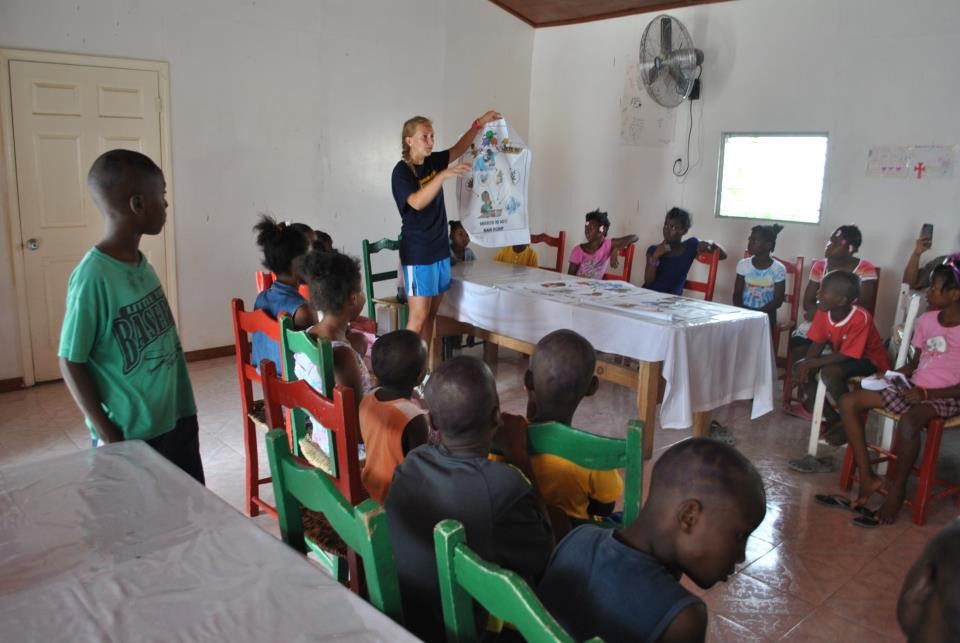 In the first world, we barely think twice about sanitation. It is drilled into us at a young age to wash our hands and what water is safe to drink. However, in developing nations this is not always the case. Here, Bjorg Olafs is arming Haitian children with the knowledge they need to protect themselves from illness. “The 20 minute long Water, Sanitation, and Hygiene (WASH) programs were just as important if not more important than all the time it took to get the purifier going” says Dr. Compere. “The children may not know that washing themselves where animals defecate could get them sick. Now they do. It is about helping on the full spectrum.”
In the first world, we barely think twice about sanitation. It is drilled into us at a young age to wash our hands and what water is safe to drink. However, in developing nations this is not always the case. Here, Bjorg Olafs is arming Haitian children with the knowledge they need to protect themselves from illness. “The 20 minute long Water, Sanitation, and Hygiene (WASH) programs were just as important if not more important than all the time it took to get the purifier going” says Dr. Compere. “The children may not know that washing themselves where animals defecate could get them sick. Now they do. It is about helping on the full spectrum.”
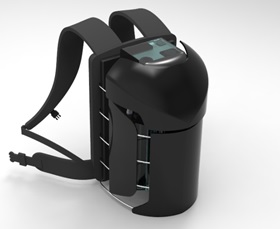 When asked about the recent events in the Philippines, the team stated that their project unfortunately is not equipped for rescue situations. However, they are working with other groups and keeping an eye on the situation. They have started a company, AquaSolve Ventures, LLC, that is producing portable solar water purification backpacks that can purify at 3 gallons/minute for just such a disaster.
When asked about the recent events in the Philippines, the team stated that their project unfortunately is not equipped for rescue situations. However, they are working with other groups and keeping an eye on the situation. They have started a company, AquaSolve Ventures, LLC, that is producing portable solar water purification backpacks that can purify at 3 gallons/minute for just such a disaster.
Project Haiti is always looking for donations to fund their $39,000, 8 day trips to Haiti. They have successfully installed a water purification system in each of their four trips. They also like to keep their supporters updated via facebook.
